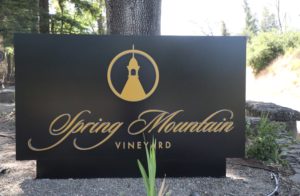
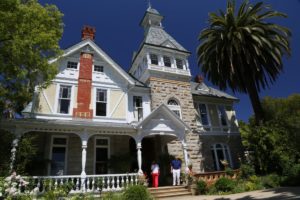
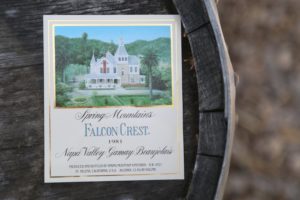 Spring Mountain Vineyard is arguably one of the more photogenic wineries in all of Napa Valley. The winery is located just outside of the St. Helena town limits – off of the narrow windy Spring Mountain Road connecting St. Helena to the city of Santa Rosa to the west. The oldest winery on this sizable property until burning down in 2020 (La Perla Winery) dated from the early 1870s. Several other historical buildings all from the late 1800s include an old barn containing vintage horse drawn carriages & miscellaneous winery equipment. The storied history of both this winery and property can be simply described in two words: intriguing & extensive.
Spring Mountain Vineyard is arguably one of the more photogenic wineries in all of Napa Valley. The winery is located just outside of the St. Helena town limits – off of the narrow windy Spring Mountain Road connecting St. Helena to the city of Santa Rosa to the west. The oldest winery on this sizable property until burning down in 2020 (La Perla Winery) dated from the early 1870s. Several other historical buildings all from the late 1800s include an old barn containing vintage horse drawn carriages & miscellaneous winery equipment. The storied history of both this winery and property can be simply described in two words: intriguing & extensive.
Modern day Spring Mountain Vineyard dates back to 1962 when founder, Knight Michael Robbins (died 2013, unfortunately we never met him) purchased his first property on Spring Mountain and grew Chardonnay and Cabernet Sauvignon. Mike’s background was in real estate with projects in Los Angeles and San Francisco. At one point he was also an investor in Mayacamas Winery. Mike did not establish Spring Mountain Vineyard in its current location, rather it was founded in an old Victorian house and hillside property located north of the town of St. Helena (he purchased this site in 1964).
This historic Victorian can still easily be seen while driving Highway 128 (on the west side of the highway just north of Markham Vineyards); it was built in 1878 by Fritz Rosenbaum (with the proceeds earned from his glass and mirror company based in San Francisco at the time). He called this mansion Johannaberg – named in honor of his wife Johanna. He made wine here (fermenting primarily Riesling and Zinfandel in the basement of the home) but never sold the wine. William Casey, an ophthalmologist (who we met years ago at a tasting in St. Helena) founded St. Clement in 1976 and built a winery behind the iconic historic home. He chose the name St. Clement to honor his ancestors who helped found the state of Maryland. He eventually sold St. Clement to the Japanese brewer Sapporo USA in 1987. Treasury Wine Estates was the previous owner – they sold the winery, home, land + vineyard to current owner, Huneeus Vintners in late 2016.
Despite getting his winery bond for the Victorian, Mike did not produce his Spring Mountain Vineyard wines here, because the cellar was so small. Rather he produced his earliest vintages at Heitz Cellars located at the end of Taplin Road, west of St. Helena and also at least the 1972 vintage at Cuvaison. The first vintage of Spring Mountain Vineyards was a non-vintage Cabernet Sauvignon ‘made’ in 1971 with grapes from both 1968 and 1969, from wine already aging in barrels purchased from Joe Heitz of Heitz Cellars. A small portion of this blend was from the acclaimed Martha’s Vineyard in Oakville. And Mike’s early source for grapes was from a vineyard in Rutherford on site of what is now Mumm, Napa Valley. The image of the old Johannaberg Victorian was used on the label on several of the Spring Mountain Vineyard early wines up through the 1973 vintage.
Mike even tried to purchase Freemark Abbey Winery but was unsuccessful. The name Spring Mountain Vineyards was being used by the owners of Freemark Abbey at the time as a second label. Mike ultimately purchased the rights to this name from one of the owners, the Aherns.
In 2022, Spring Mountain Vineyard declared bankruptcy in part due to the extreme fire damage the property sustained during the Glass Fire in late 2020 with nearly 20 structures destroyed or damaged on the property. At the end of June 2023, ownership of this property changed hands to the current owner, New York based MGG Investment Group LP, led by founder (2015) and current CEO Kevin Griffin and current CEO of Spring Mountain Vineyard, Peter Ekman. In early 2025 it was announced that the Italian firm Generali Investments acquired a majority stake in MGG. MGG is located in the PENN 1 Building, directly across from Madison Square Garden. Go Knicks.
MGG Investment Group Headquarters, PENN 1, New York
Thankfully, the entire property remains intact and was not parceled off into smaller pieces. Ownership has already and is currently making numerous upgrades, restorations and changes to the property including a significant replanting and planting additional vineyards totaling 220 acres over 150 unique blocks (their Chardonnay was removed), a major upgrade to the existing caves, restoring/upgrading some of the old buildings and beautifying the gardens and grounds. Total estimated cost is around 100 million with completion by 2028 and the first wines released from the replants sometime after 2030.
One of Napa Valley’s top winemaking teams Atelier Melka consults for winemaking. Bettinelli Vineyards took over the management of the vineyards. Full-time vineyard workers from the previous ownership stayed and continue to oversee the vines.
We will keep a very close eye on the evolution of this iconic winery and will update this review accordingly over time.
MIRAVELLE
One of the early owners of this property was Tiburcio Parrott (a prominent patron of the arts); he was born in 1840 in Mazatlán Mexico and died in 1894; his mother, Deloris Parrott Ochoa was his father John’s mistress from Mazatlan. Much later in life, Parrott made his way to the Napa Valley; he was a prominent vineyardist. His family was well-off; his father John, a banker and prominent San Mateo, California resident (who like Fortune Chevalier owned a mansion on Folsom Street in San Francisco), owned the Parrott Block in San Francisco – one of the city’s earliest office buildings and owned the Sulfur Bank Mine in Lake County to the north – whose products were borax & cinnabar.
Because of his family ownership of the mine, financial ramifications and a strong moral compass, it was Tiburcio Parrott who would make labor history in 1880. Earlier that same year California legislature has passed a law prohibiting businesses from hiring Chinese employees. After the law passed Parrott refused to fire his employees and was arrested in 1880, imprisoned, released on bail and later went to trial. Ultimately his decision was validated by the courts, and he was able to rehire all the employees that were forced to resign.
His decision was in opposition to the sentiment of others. An article published in the April 28, 1882 issue of the Napa County Reporter details citizens of the town of Martinez, CA (about 30 miles from the city of Napa) turning out in masse in front of a house occupied by Chinese workers. These citizens then violently attacked the establishment, destroying it and in the process causing all the inhabitants to flee. These same people also visited warehouses where the Chinese worked and forced them out, in the process killing several and severely wounding others.
And this wasn’t the only mine Tiburcio was involved in, in 1874 he invested significant money (through the California Mining Company) into a town in La Plata Mountains of Southwest Colorado called Parrot’s City. This town no longer exists – the buildings are all gone, it is simply a former townsite.
But back to Napa Valley. Tiburcio’s father John died in 1884 and later that year, his stepmother, Abby purchased this property for $28,000 for Tiburcio from a gentleman named Andrew B Forbes who already had a block of Zinfandel growing on site (they let Tiburcio move on to the property). That same year development began on what would become 125 acres of grapes along with 5,000 olive trees (olive oil was made from both olives from the estate as well as purchased olives from within the Napa Valley and Livermore) and several years later, 1,000 citrus trees and 5,000 roses (which in 1891, Tiburcio sold 1,000 of his roses to Bourne at Greystone Cellars where they were planted on their grounds). A contemporary of the Beringer Brothers, Parrott befriended and bestowed them a proper nickname, “Los Hermanos” – meaning, the brothers, in English.
He hired prominent architect Albert Schroepfer (responsible for designing the Niebaum home and the Rhine House at Beringer Vineyards) to design a mansion that he called Miravelle (literally translates to ‘look valley’). This impressive structure was built in 1885 with rock quarried from Howell Mountain (perhaps, but only speculation, the same quarry on either the former Arns Winery property, which are now ponds, or on what is now the Terraces Winery (both former quarries supplied stone for what is now the Culinary Institute of America at Greystone in St. Helena). A. Borla was the stone mason of record. Parrott liked to call his property the Chateau Margaux of America.
A number of well-known personalities have visited the property over the years – including namesake for the Pulitzer Prize, Joseph Pulitzer who stayed with Tiburcio here in April of 1888 and Andrew Carnegie. For a time, the Parrott’s niece lived with them on the property (Therese Hamlin who married the famous singer Richard Jose – known for his haunting rendition of Silver Threads Among The Gold).
Inventor, mathematician and entrepreneur, Danny Hillis founded Thinking Machines Corporation in 1983, a super computer manufacturer and AI company. Mike Robbins was an early investor in this company. Hillis stayed in the Miravalle mansion and supposedly during his time upstairs, he first thought of the idea for the Clock of the Long Now, a special clock that is designed to keep time for 10,000 years.
Tiburcio’s gravesite + Parrott Drive, San Mateo
The nearby carriage house still contains old wooden carriages and was referred to as the ‘owl house’ by Tiburcio (one understands why he called it this when one views the exterior). Parrott’s primary wooden carriage is still housed on site – with a horn in the back to alert the brothel at the time, the Stone Bridge Salon and Brothel which was located on the eastern part of Pope Street (near the Pope Street Bridge and on the edge of the grounds of what is the Upper Valley Campus (UVC) of Napa Valley College in St. Helena of his impending arrival. And Tiburcio’s old olive oil press is still located next to the carriage house.
By some miracle, this carriage house survived the Glass Fire in 2020 – the fire burned trees right up to the back of the house and embers even started burning a small section of wood next to a window on the upper story – but the building remarkably survived intact.
Parrott produced a red wine called Margaux and a white burgundy up until he died in Miravelle prematurely in 1894 from stomach cancer (only 54 years old) – he suffered a fracture of his left kneecap in February that same year at the Occidental Hotel in San Francisco – but that accident was presumably no way related to the cause of his death. At the time of his death, he had only produced a handful of vintages from the property. His wines were award winning – even posthumously taking home a gold and a bronze medal in 1896 from the Atlanta Exposition.
After he died, his widow Therese Tuffy (who he married in 1888 and was previously the maid at the Beringer Rhine House) moved from the property to the other side of the valley, taking up residence on Howell Mountain. She lived a very long life, having died at age 94 in 1951. The first floor of the old house was used as a roller-skating rink by locals for some 30+ years using the 1-inch-thick wooden floors. The house was uninhabited from 1895 to 1940 and at one point in the 1930s was owned by an investment company; in 1941 attorney and Oakland Central Bank Director, William Hyde and his wife purchased the property and lived inside Miravelle. They oversaw the construction of the swimming pool (which is located on the east side of the mansion).
Tiburcio and Therese are buried at the St. John Cemetery in San Mateo – the land for this cemetery was donated by Tiburcio’s stepmom Abby (the Tiburcio mausoleum is arguably one of the highlights of visiting this cemetery). For reference, Tiburcio and Therese’s gravesite is located slightly to the west of the mausoleum. Nearby Parrott Drive, which winds through the exclusive and hilly town of Hillsborough, is named after Tiburcio’s father John who owned some 400 acres in town, called the Parrott Baywood estate.
—
In 1974, Mike purchased what was called the Parrott Estate and the Miravelle mansion. Soon after acquiring this historic property, Mike restored the stately old Victorian and built a winery – moving Spring Mountain Vineyards to its current location. And astute long-time followers of the Spring Mountain Vineyards wines will notice that the image on their bottles appropriately changed from the 1973 vintage to the 1974, now reflecting the Miravelle mansion instead of Johannaberg (the former home of Spring Mountain Vineyard and today home of Faust Wines).
From 1975 to 1979 Robbins had the winery constructed on site to roughly resemble the ‘city hall’ in Disneyland. Prior to construction, an old shed stood in front of the cave entrance. Materials in part were reclaimed from old homes in San Francisco that were being torn down at the time.
In addition to producing excellent wines under Mike’s ownership, Spring Mountain Vineyards was one of several Napa wineries to appear in the TV Show, Falcon’s Crest. Mike even released several wines under the Falcon Crest label in the early 1980s. And the winery was one of a select few featured in the 1976 Paris Tasting – the 1973 Spring Mountain Vineyards Chardonnay took 4th place with some of the grapes for this wine sourced from a vineyard on Atlas Peak.
Switzerland based businessman, film producer, investor in Encyclopædia Britannica and Merriam-Webster among numerous other interests, and former owner of Spring Mountain Vineyard, Jacqui (Jacob) Safra purchased and combined three historical wineries (four adjoining vineyard sites) between 1992 and 1996 – Miravelle, Chateau Chevalier and La Perla, totaling 845 acres of which 225 is planted to vine. For perspective, Spring Mountain Vineyard is slightly larger than New York’s Central Park.
Under Safra’s ownership, the old greenhouse located next to the visitor parking spaces, was moved from its prior location on the Chevalier property to its current location in the 1990s.
Located at 400 feet, Miravelle is the lowest winery site on the property and is also where visitors to the property are hosted.
Villa Miravelle exterior
Villa Miravelle, interior
Winery/Cave
Carriage House
Gardens
Miscellaneous
CHATEAU CHEVALIER
Heading up the property to about 1000 feet is Chateau Chevalier. The property was first planted to grapes in 1870 by Jacob Beringer (of Beringer Vineyards). Its namesake is French born Fortune Chevalier (1814-1899) who trained as a stain glass artist who sailed around the Horn of South America arriving in California in 1850. He lived in Santa Cruz County for a few years – establishing that county’s first sawmill. Despite speaking only broken English, he operated a successful business; in 1857 he moved to Placerville and founded F. Chevalier and Co bottling and selling a variety of whiskies and other alcoholic products primarily to those who had worked the gold fields and settled in this part of the state. He also lived in Sacramento in the ensuing years.
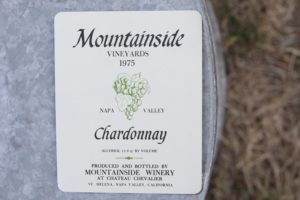
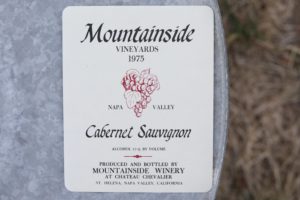 He purchased what would become the Chateau Chevalier property on Spring Mountain in 1884 and five years later deeded the site to his son George (whose own 9-year old son Hilaire was killed in midsummer 1914 while walking down stone steps leading to the swimming pool when the barrel of his 22-calibre Winchester rifle fell to the steps, the bullet going off and striking him in the stomach). He later died early the next morning. Incidentally this original pool is still fairly intact, a short walk from the walls of Chateau Chevalier.
He purchased what would become the Chateau Chevalier property on Spring Mountain in 1884 and five years later deeded the site to his son George (whose own 9-year old son Hilaire was killed in midsummer 1914 while walking down stone steps leading to the swimming pool when the barrel of his 22-calibre Winchester rifle fell to the steps, the bullet going off and striking him in the stomach). He later died early the next morning. Incidentally this original pool is still fairly intact, a short walk from the walls of Chateau Chevalier.
The family built the original mansion here in 1891 and also finished construction of the still standing gorgeous gravity-flow stone winery, Chateau Chevalier in 1892. Some of Fortune’s original stain glass windows still are in place in the building.
And like Tiburcio, George Chevalier also knew the Beringers, how close the families were to each other, we cannot say, but according to a mention in the Napa Journal from April 27, 1901, Jacob Beringer sold 82 acres to George Chevalier for the sum of $10.
By 1895 Chevalier owned/housed approximately 400,000 gallons of bulk made wine through a one-time acquisition from St. Helena Winery, Dowdell & Co. According to an article in the Napa Register, this transaction was the largest wine sale ever made in the state of California at the time. Fortune died in April of 1899. The 1906 earthquake destroyed the Chevalier family home on Folsom Street in San Francisco as well as their wine warehouses (over the years they maintained properties in San Francisco at 614 Front Street and 520 Washington Street). What is remarkable is that the Chevalier mansion was located very close to the Parrott mansion (620 Folsom Street), both on the same street and both owning property on Spring Mountain. We have not yet found any record both families knew each other or socialized, but it is very likely they did based on their status in society and proximity of both their San Francisco and Napa Valley properties.
Chevalier first business site, 614 Front Street, San Francisco (1872-1876)
Chevalier second business site, 520 Washington Street, San Francisco (1877-1895)
George Chevalier sold his Spring Mountain property in 1916 to the John Grennan – a real estate developer living in San Francisco (perhaps in part to distance themselves from both the property and the memories of the shooting tragedy) who then sold to another short time owner, the Cuvellier family who in turn sold to Howard Hamilton Hart in 2018. The Hart’s never produced wine from the property during their ownership. Hart’s stories and family read like something out of a combined epic soap opera, drama and an adventure film. After running away from his family in Indiana at age 12, Howard eventually headed west and early in his career became a cowboy in Colorado, later a prospector and with George Carmack, were early gold miners at Bonanza Creek in the Yukon Territory, (site of the Klondike gold rush); we have seen historical references in old newspapers that Hart built the first cabin at Bonanza Creek. The sizable, *very remote* and lengthy Hart River in the Yukon Territory is named after him. Those looking to gain access to this river can do so by using Yukon based Black Sheep Aviation, flying out of the tiny outpost of Mayo (about a 3 hour drive out of Dawson City).
His efforts ultimately left him broke when he lost all his findings and according to one article in the St. Helena Star from August 5, 1927, he narrowly escaped death on the SS Islander steamship shipwreck (ran into an iceberg or large rock) in 1901 near Juneau Alaska (in which at least 40 lives were lost and a value at that time of $500,000 to 2 million in gold – roughly 13,300 ounces in total). In 2012 some 1200 ounces of gold were finally recovered (only a portion of the estimated overall amount) and were later auctioned off in 2016. Either some of this gold that was retrieved from the deep was part of Hart’s findings or his gold still remains at the bottom of the sea.
Later he was an oilman (at one point President of Caribou Oil Mining Company) who got in on the early stages of the developing Coalinga Oil Field in California where he made his riches. He was also a stockbroker and a philanthropist. Hart’s family included 5 children – all adopted including two nieces from his brother John and two of which were simply left on the doorstep of their 43-room family home in Berkeley – one of which was claimed by the real mother shortly after abandoning it. This mansion was unfortunately demolished in 1939 because one of his adopted daughters, Orpha Hart Vickers and her husband became tired of paying taxes on the old place and they weren’t able to sell it). Hart died in 1927 at age 75.
After acquiring the Chateau Chevalier property, Hart decided to call the property Harthaven and use it primarily as a summer home. Although we have found a reference to the Hart’s soon after their purchase referring to their property as Chateau la Houtrisse. The old stone Harthaven marker is located next to this properties’ driveway off of Spring Mountain Road. Incidentally a large portion of their original driveway slid into York Creek next to Spring Mountain Road many years ago – so a new road had to be built after Safra purchased the property. And of historical note was the nearby York Creek Dam (St. Helena Waterworks) was sometimes used in reference in old articles from the St. Helena Star about nearby Spring Mountain Vineyard properties; this reservoir was built in 1878 and was the original water supply for St. Helena through to the 1920s – it was completely removed in the summer of 2020. A plaque located on a pull out next to Spring Mountain Road details some of the history of this creek and reservoir.
Unfortunately the original mansion near and built at the same time as Chateau Chevalier burned down in 1927 when the Hart’s butler moved a mattress close to the fireplace to warm up, after becoming drunk. So, they rebuilt another mansion in most of the same footprint of the previous structure. Incredibly this one also burned down, in 1936. Mrs. Louise Scholler Hart (Howard’s first wife Orpha Campbell Hart previously died and Louise was his second wife and housekeeper initially before they married) was trapped inside at the time of the fire – but did escape with her life although was left with permanent disfiguring scars, most prominent on her face and refused to leave the property having then given up on rebuilding the home a 3rd time in the same place – but rather a pre-fab home was built in 1937 in a new location on the property about 1/4 mile away (this house was abandoned and was also burned to the ground, but intentionally by the St. Helena Fire Department who were granted permission to use the old house for a ‘practice run’). Mrs. Hart died in 1953 in San Francisco.The remnants of what were formidable formal gardens can still be seen around Chateau Chevalier including a number of stone steps, terraces, a pool and several small structures whose uses remain a mystery. Remarkably a portion of the original hedge maze/walkway next to where the prefab home was built in 1937 was still alive until September 2020 when it was completely burned in the Glass Fire. And what was an incredible rarity in the Napa Valley – a wooden carriage house stood until also being burned to the ground by the Glass Fire leaving nothing but ash, charred timbers which fell to the side of the structure, all lined up in a row – from the building as it was burning and numerous square nails (it was built in the early 1890s).
The Harts sold the property in 1941 to the Leslie Rogers family who built a living space on the second floor of Chateau Chevalier and while also restoring it. They sold the property in the early 1960s to friends who purchased it as a timeshare. In 1969 the Bissonette family (along with initial partner James Frew) acquired the property and resumed commercial winemaking for the first time in 1972 from purchased fruit. Their 1972 vintage was a Clements District Late Harvest Zinfandel (unfiltered and unfined). The first estate wines produced at Chateau Chevalier were from the 1974 vintage and were labeled Mountainside Vineyards (produced and bottled by Mountainside Winery). At their height around 60 acres were in production with wines selectively distributed at restaurants in a number of states. Gregory Bissonette was a former jet fighter pilot (served in Korea) and San Francisco based stockbroker; he and his wife Kathy (Kay) moved into the second floor of Chateau Chevalier and raised their six children here (both Greg and Kay are deceased). Spring Mountain Vineyard even produced several wines bottled as Chateau Chevalier Cabernet Sauvignon wines between approximately 2003 and 2009.
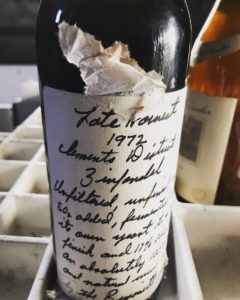
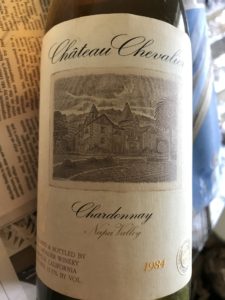 Eventually Napa Valley vintner Gil Nickel and his brother John purchased the site from the Bissonette’s in 1983 – they were going to rename this site to Nickel & Nickel but then John decided to move back to Oklahoma and with vines infected with Pierce’s Disease at the time, they sold the property in 1993. However, during their ownership, they did register the old winery with the National Register of Historic Places and the did produce wines at least initially under the Chateau Chevalier label.
Eventually Napa Valley vintner Gil Nickel and his brother John purchased the site from the Bissonette’s in 1983 – they were going to rename this site to Nickel & Nickel but then John decided to move back to Oklahoma and with vines infected with Pierce’s Disease at the time, they sold the property in 1993. However, during their ownership, they did register the old winery with the National Register of Historic Places and the did produce wines at least initially under the Chateau Chevalier label.
The label for their 1984 bottle of Chardonnay was designed by John Nickel and Ralph Colonna (Ralph helped work on the original drawings for the iconic Silver Oak wine label) and the tiny engraving on the label was produced by Master Engraver Robert Swartley (he died in 2016 and was also responsible for the engraving for Abreu Vineyards, among others).
The 1984 Chateau Chevalier Chardonnay (tasted 36 years after vintage – we tried two bottles) are both deep amber in color with plenty of bottled aged aromatics including prune, candied orange peel and ripe sweetness including honey and apricot. It’s fun to smell these aromatics from a variety we never evaluate with this much age on it. One bottle was undrinkable. The other almost as such; it still showed its acidity but with the fruit taking on a slightly nutty character along with some harsh citrus notes including lemon.
And Chateau Chevalier was filmed for a special on SOMM TV called, Ghosts of Spring Mountain.
Rising in elevation to around 1200 feet is the Beringer brothers’ original vineyard site, planted in 1882.
LA PERLA
Topping out at about 1,600 feet was one of the older wineries in the Napa Valley (burned down in 2020); La Perla was founded by George Charles Lemme and dates from the early 1870s (possibly construction began in 1873 and was completed by 1876). Lemme’s son Rudolph would eventually marry Alice McPike, granddaughter of Dr. George Belden Crane (one of the Napa Valleys’ most prominent pioneering viticulture families). Tragically the old winery burnt down in late September 2020 – with its stone walled first floor built into the side of the hill with an enormous wooden second floor that was used for various storage, including numerous historical items. Some of the original wooden carriages were housed here – some with wooden brake pads, others with at the time, state of the art leather brake pads. And an ever-flowing trickle of water from a naturally occurring spring flows through a sculpture mounted into a rock wall in front of the winery.
Wine was made commercially here through 1919 when Prohibition became the law of the land. But wine continued to be made at the winery during parts of Prohibition – being sold to family in New York. No wine was made here commercially during later ownership.
On the hillsides surrounding the winery is where Lemme planted by hand the first ever Cabernet Sauvignon vines in the mid 1870s – in what is now the Spring Mountain District. At its peak, his vineyard was 65 acres. It is truly a trek to drive here – on a narrow windy road that climbs well above the valley floor. And one can only imagine how long it took primitive wooden horse drawn carriages to make this journey.
Interestingly the Schilling family (known for founding Schilling Spices in San Francisco – now Mcormick Spices owned this particular part of the property) are related to another Napa Valley winery family, the Steltzner’s (as told to us by Allison Steltzner during a lovely visit at her place in Uruguay). The connection with the Schilling family was through marriage – George Charles Lemme’s daughter Agnes married into the Schilling family (August Schilling). In 1903 the Schilling family incorporated their vineyards as Spring Mountain Vineyard Company.
And what is a truly intriguing piece of history – are the two military wooden barracks that were constructed presumably in the early 1940s built just below La Perla. After Japan attacked Pearl Harbor the United States built a number of forts and other military outposts up and down the west coast. We can find very little information about this – but these two barracks were apparently one of these hidden outposts and were staffed with military for some time. In later years they served as worker housing.
And Draper Vineyards operated here for a number of years beginning in 1944 when Jerome C Draper purchased this property from Russian immigrant Herman Hummel; Herman was hired by the Lemme family initially to help work in the vineyards. The old Draper home (dates from 1971) stood here until it burned down in September 2020, a casualty of the devastating Glass Fire. The surrounding gardens were designed by prominent landscape architect, Thomas Church (California postmodern). Apparently, Church enjoyed his negronis because he always requested the Drapers have one waiting for him when he arrived on property.
This is one of the more incredible home locations in all of Napa Valley; it sits on a knoll with expansive vistas in all directions, connected to a strip of land with another knoll slightly higher (the highest point on the property). And from here on a clear day, one can see much of the Napa Valley spread out far below.
This is not the only Church influence in Napa Valley; he also designed the gardens at William Cole Winery located just north of St. Helena. The house was empty and was not lived in since the 1980s – a visit was like walking back in time with the era look and feel of the interior.
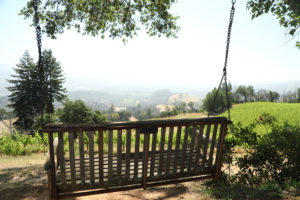
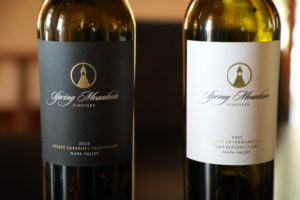 Over the years, the Drapers had sizable real estate holdings in both the central valley near Modesto and in the Napa Valley having owned over 1,000 acres in Carneros.
Over the years, the Drapers had sizable real estate holdings in both the central valley near Modesto and in the Napa Valley having owned over 1,000 acres in Carneros.
While Draper Vineyards never made commercial wine, they sold their grapes to a number of prominent wineries. No relation to Paul Draper, who coincidentally began purchasing grapes from Stanford University college classmate Fritz Maytag on Spring Mountain starting in the 1970s for some of his wines at Ridge Vineyards (a relationship that continues today). We met with Jerome Draper Jr (Jerry) for more insights into his family’s holdings in the Napa Valley (at 96 years young at the time of our conversations, his memory is still like a vice – quick to recall specific dates, people, and stories).
Jerome Draper Jr retired on January 1, 2024 from Jerome Draper Wine Merchant. He turned 100 years old in 2023. The appointment only wine shop the family maintains in San Anselmo, Marin County is now operated by his son Jerome III.
Like his father, Jerry also enjoyed a career in real estate (developing Northgate Mall in San Rafael, Quail Hill and Northgate Industrial Park). In addition, he owned Draper and Esquin, an importer of wines and at one point operated a wine shop in San Francisco and in Paris. Later he founded Draper Farms in 1995 in San Anselmo. In 1971 he co-founded the San Francisco based Vintner’s Club (still in business) with Lee Foster (Ravenswood) with the early tastings held above Jerry’s office and always attracting the who’s who of the wine world. Over the years, the club has influenced and provided education for numerous winemakers or vintners. Those interested in more information about the early days of the Vintners Club and their 1x a week 12-wines blind tastings can reference: Vintners Club – Fourteen Years of Wine Tastings 1973-1987 by Mary-Ellen Mcneil-Draper. Incidentally Jerry wanted to be an investor in Ravenswood Winery with Lee, but due to Alcoholic Beverage Control (ABC) regulations he was not able to do so, since he already was involved in a number of other wine ventures.
And Jerry helped organized the first ‘rematch’ blind tasting of the Paris Tasting of 1976 – hosted at the Vintner’s Club in 1978 and even flew Stephen Spurrier over to oversee the tasting.
Jerry has loads of stories about his time in Napa Valley from working at his family’s 1,100 acre Rancho Rincon in Carnero, part of the historic Stanly Ranch; the Draper property was named after the original Rancho Rincón de los Carneros land grant. He worked for 50 cents/hour in the 1940s, recalling how he and his wife Norma’s entire grocery bill for 1948, they year they were married was $31 – all spent at W F Giugni & Son Grocery in St. Helena (well before it became a deli), hunting pheasants with André Tchelistcheff, fun parties his family used to host on Spring Mountain and the time their family property was mentioned in an extensive National Geographic article about the Napa Valley (May 1979 issue). The magazine printed an aerial photograph of their family home and surrounding vineyards, taken by Napa Valley based photographer Charles O’Rear – originally the magazine was going to caption the photography as La Perla, but Jerry’s mother Virginia decided that was not a good idea and told the magazine to leave the name of Draper Vineyard out of the article.
Close friend, Martin Stelling (owner of the majority of To Kalon Vineyard in the 1940s), a bit sauced on good wine at Jerry’s engagement party offered Jerry one of his homes rent-free for the rest of his life should he be interested. This home is the pool house that still sits on what is now property in Oakville owned by the Detert family (Detert Family Vineyards).
And his father Jerome helped introduce the Davies family to Katharine Cebrian, the owner at the time of Schramsberg. After the successful sale, Jerry asked his father what their commission would be on the sale. His father simply told him there are no family commissions! The Draper Vineyard manager at the time, Joe Torres helped oversee the initial plantings at Schramsberg under the Davies ownership. And one day when a coyote killed all the ducks in a pond on the property, Jerry quickly took action, found a place in Sonoma that sold Mallard ducks – and soon had them swimming in the pond.
Jerry recalls the first grapes his family sold from their Spring Mountain property were to Lee Stewart at Chateau Souverain. Later, Lee introduced his young winemaking helper at the time, David Lett to Jerome Draper. The Drapers gave him permission to take cuttings from their vineyard of Chardonnay (which they had sourced from Wente Vineyards in Livermore, years earlier). David did so and took them to Oregon where in part these cuttings were planted in the first vineyard for what would become David and his wife Diana’s Eyrie Vineyards. And this ‘Draper Chardonnay’ was part of the first ever Chardonnay vines planted in all of the Willamette Valley.
Jerry and his sister inherited the La Perla site when their parents died in the mid 1980s. Jerry wanted to keep the property – his sister did not. They ended up selling after a contentious and legal battle. Jerry made sure his former employees were treated very well from part of the proceeds from the sale; he recalls one of his employees broke down into tears after receiving a fairly substantial check.
Part of the 1959 film starring Rock Hudson, The Earth is Mine was filmed at La Perla. Jerry recalls the gorgeous and leading actress of this film; Jean Simmons forgot her sunglasses at their property one day after wrapping up some filming and had already returned to the motel where she was staying. His father Jerome offered to drive them over to her motel and drop them off at her room – Jerry remembers his mother saying something like, ‘oh the hell you will’!
La Perla Winery
Military Barracks
Draper Home
Photos to be added asap.
—
2020 Glass Fire
On Sunday morning September 27, 2020, the first report of a fire burning on upper North Fork Crystal Springs Road (Cakebread’s Dancing Bear Vineyard) was called in at 350am. The next few days the fire spread rapidly through parts of the actual valley floor eventually causing fires in the Mayacamas mountains including in the Spring Mountain sub appellation. By the time the fires had finished burning nearly 20 Napa wineries sustained significant damage including many on Spring Mountain.
Long time vineyard manager Ron Rosenbrand (son of former winemaker at Beaulieu Vineyard Theo Rosenbrand) lived on the property at the time and through his own efforts and of the fire departments of Burbank, Malibu and San Luis Obispo was able to save the lower property including the Miravelle Mansion and the winery. The fire burned right up to the mansion even the palm trees were burned. Remarkably the old carriage house near the winery did not burn despite the fire burning through vineyards all the way to the edge of the structure and even burning through a small portion of the exterior on the second floor. It is somewhat of a miracle that this building remains intact.
Unfortunately, the home that Ron was living in at the time burned to the ground as did a number of other extremely valuable historical buildings. As a result, Ron and his family temporarily moved into the old Miravalle mansion and were the mansion’s first residents since the Robbins family. Ron retired from Spring Mountain Vineyard in 2022.
Looking back a year after this fire, about 50% of their vineyards were ultimately destroyed. A herd of goats has since been introduced to the property, rotating around the property, helping to keep chaparral to a minimum.
- 3.5 years post Glass Fire
- Remnants of La Perla Winery
- Remnant walls of La Perla Winery
- All that is left of Draper home
Terroir/Winemaking
Spring Mountain’s property lies just west of Beringer Vineyards and extends from near the valley floor to the upper reaches of the Mayacamas mountains. Few contiguous winery owned properties in Napa Valley span such a diverse elevation gain. Due to the differences in altitude, this property offers a wide diversity of soil types and growing conditions including the inherent differences in microclimates based on the elevation differences from the near valley floor to the upper most steep hillsides.
The vineyards are farmed extremely sustainable using cover crops, no herbicides or pesticides, using organic compounds to protect against mildew and protecting and nurturing beneficial insects. Starting after the replant in the mid 2020s, the majority of grapes are sold to other producers.
It should also be noted that the vast majority of their vineyards are planted on steep or terraced slopes (vineyard blocks that could never be developed today because of an ordinance prohibiting vineyard development on slopes greater then 30% due to erosion concerns). The vineyards are sub-divided into small blocks based on each block’s unique fruit characteristics or soil types. These blocks are kept separate during fermentation and the subsequent aging and it is only during the blending trials will the wine from the various blocks be blended together.
From 2012 until 2014, Spring Mountain Vineyard employed several wine consultants from both Bordeaux and Burgundy. These consultants would make the trip over to the winery several times a year. The Spring Mountain Vineyard wines have been produced by the following winemakers:
Michael Robbins (1969-1970)
Charles Ortman (1971-1979)
John Williams (1980-1984)
Greg Vita
Tom Ferrel (1991-2000)
Craig MacLean (1994-1998)
Craig Becker (1998-2000) died 2024
Jac Cole (2003-2012)
Patric Sullivan (2013)
Justin Hirigoyen (2014-2018)
Barrett Anderson (2019-present)
And wines from other wineries have been produced at times here (custom crush) including Chimney Rock, Dunn Vineyards, Spottswoode, and Togni Vineyards.
In late 2023 a 50 million gallon reservoir was added to the upper part of the property, providing an additional water source from rainfall to be used on the vines as needed throughout the year.
Hospitality
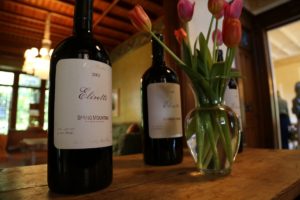
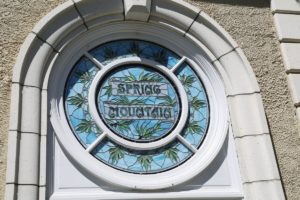
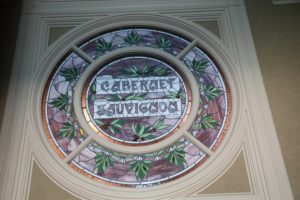 Guests can opt to reserve a tasting only, but we highly recommend the combined tour and tasting which takes about 90 minutes. This is one of the nicer tours and tastings in the valley but be sure to book well ahead of your tour date, as these experiences generally fill up weeks in advance.
Guests can opt to reserve a tasting only, but we highly recommend the combined tour and tasting which takes about 90 minutes. This is one of the nicer tours and tastings in the valley but be sure to book well ahead of your tour date, as these experiences generally fill up weeks in advance.
The grounds are beautiful – featuring a wide variety of Mediterranean shrubs and trees including numerous olive trees. In complete contrast to the Mediterranean foliage is their sub-tropical garden containing palms and bananas; it is remarkable these plants do so well in Northern California. Also look for the Norfolk Pines growing outdoors; since this is a sub-tropical tree, it rarely grows outside in this part of the state. A tiny vineyard block grew next to the winery until the vines were removed in mid 2024. Each row used to be cared for by select employees.
And a small plot of land is used for raising vegetables for workers on the property. As of our latest update to this review, produce from this goes to Charlie’s Napa Valley Restaurant in St. Helena.
The tour briefly visits the wine cave; guests will notice that the original cave is dwarfed in size when compared to their much-expanded modern cave. However, it is worth seeing from a historical perspective as this was hand cut with pickaxes by Chinese workers in 1885 (one of a very select few wine caves in the Napa Valley that date from the 1800s – others being Storybook Mountain, Beringer, Del Dotto in Napa and Stags’ Leap Winery). What used to take years to tunnel out a rather short cave using hand tools – is today a much quicker process using modern cave drilling machines. The “new” cave is about 20,000 square feet.
During Mr. Safra’s ownership, he would spend much of his time in Europe; a few rooms in his private residence upstairs were included on the tour if he was not on site. His “carriage” house is a real gem; it underwent a major renovation and shows very nicely now. The entire property was closed to the public for almost 10 years during these renovations. No expense was spared in this house. Visitors will taste in a beautifully furnished room; the chandelier that sits above your head used to be in one of Rupert Murdoch’s homes (later purchased by Mr. Safra). A number of sports players and other celebrities have also toured this property over the years.
Grand Reveal Soiree, September 7, 2024
A memorable event was held on Saturday September 7, 2024 to celebrate the rich legacy and history of this property and with the Architectural Resources Group and the St. Helena Historical Society, stories and discoveries regarding the estate were shared including the vision for the future.
Select Wines
Spring Mountain Vineyard concentrates on red wines, although they do make an estate Sauvignon Blanc and more recently a very limited production Chardonnay. Some Pinot Noir is also grown on site which is extremely rare in this “hotter” part of the valley, but they have found a cool spot on their property for this. Only several other Spring Mountain wineries actually grow Pinot Noir – all in small amounts.
Spring Mountain Vineyard produces excellent Syrah and Cabernet Sauvignon. One of their Cabernet Sauvignon blocks planted in 1954 produced grapes for many decades but has since been replanted. For reference, as of our latest update to this review, other old Cabernet Sauvignon vines in the valley are a very limited number of vines at Scarecrow in Rutherford (1945), a section within the MacDonald Vineyard in Oakville (1954), a one-acre block owned by Grace Family Vineyards (1957), possibly a block at Varozza Vineyards and a sizeable block owned by Grgich Hills in Yountville (1959).
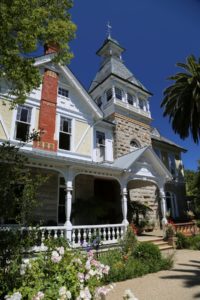
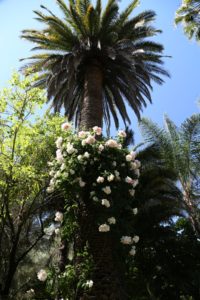 The wine that they are most known for is Elivette, a Cabernet Sauvignon based wine which is blended with small amounts of various Bordeaux varieties; the varieties and blend percentages change from year to year. The first vintage of this wine was from 1999; it was made from some of the most prized vineyard blocks on the property across a variety of elevations. This wine was named in honor of the former owner Safra’s parents, Eli and Yvette – combining parts of their first names. The select vintages we have tasted over the years all have excellent acidity and other hallmarks for long term aging. Prior to being named Elivette, this wine was bottled as a Reserve. And beginning with the 2021 vintage, Elivette has transitioned into its new name and branding, called Resurrection.
The wine that they are most known for is Elivette, a Cabernet Sauvignon based wine which is blended with small amounts of various Bordeaux varieties; the varieties and blend percentages change from year to year. The first vintage of this wine was from 1999; it was made from some of the most prized vineyard blocks on the property across a variety of elevations. This wine was named in honor of the former owner Safra’s parents, Eli and Yvette – combining parts of their first names. The select vintages we have tasted over the years all have excellent acidity and other hallmarks for long term aging. Prior to being named Elivette, this wine was bottled as a Reserve. And beginning with the 2021 vintage, Elivette has transitioned into its new name and branding, called Resurrection.
It is noteworthy to mention that some of the older Spring Mountain Vineyard red wines we have tried show the influence of brettanomyces (or commonly referred to in the industry, as brett). Former Brand Manager, Aida Parsa mentioned that their wines started showing cleaner sometime between the years of 2005 and 2007. Brett is a type of yeast that often shows its resulting attributes well after primary fermentation has occurred due to its slow growing nature. It can remain on used barrels from vintage to vintage but can also be on new barrels. Many consider brett a flaw, an infection if you will, due to improper hygiene in the cellar, but others consider this an additional source of character or complexity in wines. We fall in the latter camp – for several reasons. Most of our tastings are of current release Napa Valley wines which are ‘clean’ and reflect the fruit rather than additional influences from brett. In addition, we don’t mind a bit of brett (up to a point). Therefore, it’s more of a novelty these days when we get to try Napa Valley wines with some brett influence.
Characteristics can include sweaty leather and barnyard like aromas among other both appealing and non-appealing aromatic attributes. For more information about this type of yeast, please refer to sommelier Kelly White’s award-winning article (Louis Roederer International Wine Writers’ Awards 2019) about brettanomyces here.
Bottle numbers began appearing on the Spring Mountain Vineyard wines starting in 1993 and lasting through 2020. The first vintage that did not include bottle numbers on the label was in 2021. A new label design for all the Spring Mountain Vineyard wines was introduced in 2022 designed by the creatives at Guage Branding.
2020-2030
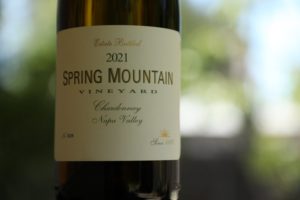 The 2021 Spring Mountain Vineyard Chardonnay is medium to deep gold in color; the bouquet is gorgeous and diverse, sporting aromatics of lemon oil, golden apple, citrus blossom, pineapple, comise pear and more subtle but there, note of vanilla extract. Creamy, intensely flavored, bright and balanced, all wrapped into one generous act, this wine delivers immediate pleasure but is also built to age. The palate offers flavors of apple, lemon juice, lime and pineapple and finishes with a slight saline character and a creamy texture. Both richness of fruit and lively acidity linger for quite some time on the extended finish. Only a few barrels of the overall production go through malolactic fermentation; the wine was aged for 9 months sur-lies in François Frères oak barrels.
The 2021 Spring Mountain Vineyard Chardonnay is medium to deep gold in color; the bouquet is gorgeous and diverse, sporting aromatics of lemon oil, golden apple, citrus blossom, pineapple, comise pear and more subtle but there, note of vanilla extract. Creamy, intensely flavored, bright and balanced, all wrapped into one generous act, this wine delivers immediate pleasure but is also built to age. The palate offers flavors of apple, lemon juice, lime and pineapple and finishes with a slight saline character and a creamy texture. Both richness of fruit and lively acidity linger for quite some time on the extended finish. Only a few barrels of the overall production go through malolactic fermentation; the wine was aged for 9 months sur-lies in François Frères oak barrels.
2010-2019
The 2018 Spring Mountain Vineyard Sauvignon Blanc is medium yellow in color; we immediately noted two beautiful aromatics upon smelling this wine: lemongrass and pineapple. In the northern part of the state we grow lemongrass year round and we’ve grown and successfully produced pineapple fruits in an unheated greenhouse. The are numerous other scents on this extremely appealing bouquet including notes of kaffir lime, kumquat, honeydew melon and green apple. Someone who we were tasting this wine with referred to its aromatics as a warm tropical embrace. The texture offers a light creamy, almost oily feel and subsequently slides smoothly across the palate. This wine reveals flavors of key lime, pineapple and kiwi. It is extremely balanced and shows a freshness 5 years post vintage date at the time of our tasting. We suspect that former Spring Mountain Vineyard historian and a great all around guy, Keith Baker gifted us this bottle.
The 2017 Spring Mountain Vineyard Elivette is deep ruby and nearly opaque; the bouquet reveals scents of sweet tobacco spices, clove and nutmeg along with dark raspberry, bramble, blackberry preserves. The palate sports flavors of plum, cherry, and blackberry; this wine is perhaps more dark fruited than several of the previous Elivette vintages we have tried. The palate coating texture features gravelly and grainy tannins, with a chewy character to them. This wine has textural depth and complexity. It reveals flavors of blackberry, boysenberry and dark plum. This vintage in general shows more up front fruit and this is noticeable on both on the bouquet and the palate. Its texture is one of this wine’s hallmark attributes. Extended and drying.
For reference, the last Elivette produced by Spring Mountain Vineyard was in 2019. The Spring Mountain Estate Proprietary Red is the current equivalent bottling to Elivette.
The 2015 Spring Mountain Vineyard Elivette is deep ruby and nearly opaque in the glass; the bouquet offers scents of potpourri, dried rose petals, lavender, water splashed on slate rock in the hot sun, old cedar box and sage with its fruit showing more prominently as the wine evolves in the glass including raspberry, red cherry and a hint of red licorice. The red-fruited palate reveals flavors of plum, currant and tart cherry. Vivacious and energetic across the palate. The tannins are in a nice place 9 years post vintage, showing a persistent dusty character and a gravelly texture with persists beyond the fruit. Loads of life ahead of this beauty.
The 2014 Spring Mountain Vineyard Cabernet Sauvignon is deep ruby in color; the elegantly perfumed bouquet offers notes of petrichor, blood orange, and a floral character including dried rose petals, lavender, violets and dried sage. The palate is both red and darker fruited and is balanced and savory. It reveals flavors of plum, red cherry, currant and cranberry accompanied by dried herbs. Finishes savory, with gravelly and grainy textured tannins lingering for quite some time, persisting beyond the fruit. The finish persists with a drying character. This wine is drinking in a sweet spot right now 10 years post vintage but has loads of life ahead. It is noticeably more texturally driven then some of the 2014s we have tried from Napa Valley which were often immediately drinkable upon release. Would love to pair this with something beefy from the BBQ, perhaps a medium rare well marbled tri-tip with a dry rub of spices and herbs. Bottle 22872.
The 2011 Spring Mountain Estate Cabernet Sauvignon immediately showcases a ‘cleaner’ bouquet then the older vintages of this wine. The aromatics are about the fruit – elegant, reflecting this vintage’s cooler growing season. It sports notes of blackberry and blueberry with a kiss of mocha and espresso. There are also nuances of dried herbs including sage and more in the background, dust. Let this wine open – the fruit continues to evolve nicely. Mouthwatering, bright acidity with a tartness of cherry and plum on the finish. The tannins are still a bit tightly woven – dry in their feel, they are well-defined and linger for some time.
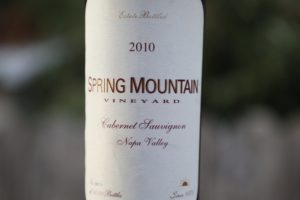 The 2010 Spring Mountain Estate Cabernet Sauvignon is 76% Cabernet Sauvignon, 10% Merlot, 6% Petit Verdot, 5% Cabernet Franc and 3% Malbec. This wine is deep ruby in color. If one was to compare this wine’s bouquet to a type of music, perhaps it would be funk and the pipes of James Brown or Aretha Franklin. The aromas are dark and gamey offering scents of grilled meats, forest floor, mushroom, crushed peppercorn, farmyard, tobacco, dark chocolate and coffee. There is fruit here but it tends to be overshadowed by all these other aromatic characters. However, with plenty of time in the glass, its fruit core will eventually be coaxed out and it reveals attractive scents of dark cherry and plum. The palate offers flavors of cherry, red plum and cranberry. Its acidity is lit brightly but in balance with both flavor and texture. The lively finish lingers with tannins sporting a light grainy character, a note of dried tobacco and dried herbs.
The 2010 Spring Mountain Estate Cabernet Sauvignon is 76% Cabernet Sauvignon, 10% Merlot, 6% Petit Verdot, 5% Cabernet Franc and 3% Malbec. This wine is deep ruby in color. If one was to compare this wine’s bouquet to a type of music, perhaps it would be funk and the pipes of James Brown or Aretha Franklin. The aromas are dark and gamey offering scents of grilled meats, forest floor, mushroom, crushed peppercorn, farmyard, tobacco, dark chocolate and coffee. There is fruit here but it tends to be overshadowed by all these other aromatic characters. However, with plenty of time in the glass, its fruit core will eventually be coaxed out and it reveals attractive scents of dark cherry and plum. The palate offers flavors of cherry, red plum and cranberry. Its acidity is lit brightly but in balance with both flavor and texture. The lively finish lingers with tannins sporting a light grainy character, a note of dried tobacco and dried herbs.
2000-2009
The 2008 Spring Mountain Vineyard Elivette offers darker fruit on the bouquet including aromas of Santa Rosa plum and blackberry along with some lavender notes. This wine takes some time to coax out the aromas – so let it wine breathe or give it a vigorous and sustained swirling in the glass. The palate offers a noticeable and notable density and richness of fruit. The richness of flavor is complemented by the structure of the tannins; they are big, chewy and long lasting. This wine still has plenty of years of ahead (tasted 12 years after vintage date).
The 2007 Spring Mountain Vineyard Elivette is deep ruby in color. The bouquet is elegant with notes of dried rose petals, dark raspberry and cherry. The focus on the bouquet is on the fruit but complemented with assorted baking spices. The palate sports flavors of leather, dark cherry, dark plum, a note of chocolate, and a dried tobacco spice. There are also layers of dried cherry and cranberry. The tannins are rounded and have been softened by time but still exert a firm and dense grip which persists for some time. Their dusty, earthy, chalky and gravelly character accompanies notes of smoked sage and assorted dried herbs. Bottle No. 21008.
The 2004 Spring Mountain Vineyard Elivette Reserve is a very aromatic wine both with fruit and its floral characteristics. Dark fruit is at the core of the palate with structured firm tannins anchoring a long finish. This Bordeaux styled wine has excellent natural acidity, fruit and structure to age for many years.
The 2003 Spring Mountain Estate Cabernet Sauvignon offers darker aromatics including leather, plum and some floral notes. Hints of anise, dark chocolate and some earthy notes also present. Juicy across the palate with a sweetness of both fruit and oak. Bright still, despite 17 years post vintage date. On the palate, there are flavors of licorice and rhubarb along with some savory attributes. Mouthwatering on the finish with still somewhat tight tannins – lingers with darker spices including notes of pepper. This wine is a pleasure to drink.
The 2000 Spring Mountain Vineyard is 66% Cabernet Sauvignon and 34% Merlot. For reference, we tasted this wine 24 years post vintage. It is deep ruby with a light brickish note to the rim brought on by age in the bottle. The aromatics offer notes of red licorice, dried red fruits including cherry along with stewed plums and old baseball mitt leather. There is a light herbal character at play here on the palate, including tea leaf. Still brightly lit, the red fruited palate offers flavors of cherry, currant and cranberry. The finish is dynamic, energetic and mouth watering. This is a fresh expression after two plus decades. The supporting tannins are lightly grainy but polished with time in the bottle and are seamlessly integrated into the palate at this age. Bottle number 323778.
1990-1999
The 1998 Spring Mountain Vineyard Cabernet Sauvignon is 91% Cabernet Sauvignon, 8% Merlot and 1% Cabernet Franc. This wine is medium to deep ruby in color; the bouquet shows plenty of tertiary aromatics 26 years post vintage at the time of our tasting. These scents include dried tobacco leaf, sweaty leather, damp potting soil, dried herbs including thyme and sage and dried berry fruits including cranberry and cherry. It is brightly lit across the palate with balanced acidity. There is plenty of fruit still; it sports flavors of red currant, dried cranberry, cherry, dried tobacco leaf and smoked sage – these latter flavors are especially noticeable on the finish. It is balanced and easy drinking but still shows a noticeable grainy grip which fully coats the palate. Both texture and fruit persist in parallel on the savory and red-fruited finish. There is also lingering note of dried tobacco leaf. Bottle 18454.
The 1997 Spring Mountain Estate is 77% Cabernet Sauvignon, 20% Merlot and 3% Cabernet Franc. We tasted this bottling 23 years after the vintage date. Opens immediately on the bouquet with aromas of sweaty leather, truffle oil, mushroom and a darker forest floor note. Also hints of baking spices. The palate shows flavors of black licorice, a sweet berry notes, red cherries, dried herbs and hints of brown chocolate. Juicy and mouthwatering with great acidity. Savory. Lingers with a light grip of dusty well-integrated tannins. Still drinking quite well despite its age.
1980-1989
The 1988 Spring Mountain Cabernet Sauvignon (was blended with a small dollop of Merlot) has turned brickish color in the glass. The first aromatic we noted when we initially smelled the bouquet was sweaty baseball mitt leather. It offers plenty of other dark and savory scents including of tobacco, a gamey character, mushroom, dried herbs, forest floor, barnyard and assorted dried red fruits. The acidity is bright with flavors of tart cherry and currant. It most certainly was dominated by red fruits in its youth; some of these characteristics are still present, 36 years post vintage at the time of our tasting. Finishes tart and lightly astringent. The tannins showcase a dusty character. Like the bouquet, the palate is also savory. Mouthwatering. This wine was aged in used French oak barrels for 22 months prior to bottling. It is 13.5% alcohol.
The grapes for this vintage were from the vineyard in front of the Miravalle mansion and were planted by Mike Robbins with bud wood taken from Spottswoode and Martha’s Vineyard. These vines were all head-pruned; they were later removed by Safra.
1970-1979
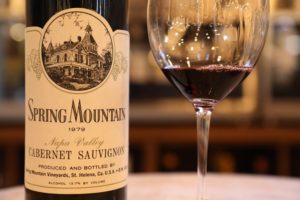 The 1979 Spring Mountain Vineyard is medium garnet in color; the bouquet is immediately sweetly fruited showcasing tertiary characters including cooked blackberry, dried cranberries along with dark licorice, sweet pipe tobacco, cherry liqueur, milk chocolate, honeycomb and a hint of dried herbs. But there is more – an assortment of baking spices are also noticeable including clove, cardamom and perhaps a light note of nutmeg. We tasted this wine 44 years and again 45 years post vintage, and at this age the bouquet shows a diversity of aromatics. The palate offers flavors of red cherry, currant, white pepper and dried cherries. One would not be incorrect in describing its character as savory. The broadly distributed tannins are rounded but still show a light grainy textural feel across the palate. This wine lingers with dried tobacco leaf and dried herbs. Its bright acidity has carried its stature well over 4+ decades. We thought of pairing this with BBQ lamb or duck. This wine is 13.7% alcohol. We have heard that this wine was so tight and ‘backward’ upon release that it was soon pulled from the market.
The 1979 Spring Mountain Vineyard is medium garnet in color; the bouquet is immediately sweetly fruited showcasing tertiary characters including cooked blackberry, dried cranberries along with dark licorice, sweet pipe tobacco, cherry liqueur, milk chocolate, honeycomb and a hint of dried herbs. But there is more – an assortment of baking spices are also noticeable including clove, cardamom and perhaps a light note of nutmeg. We tasted this wine 44 years and again 45 years post vintage, and at this age the bouquet shows a diversity of aromatics. The palate offers flavors of red cherry, currant, white pepper and dried cherries. One would not be incorrect in describing its character as savory. The broadly distributed tannins are rounded but still show a light grainy textural feel across the palate. This wine lingers with dried tobacco leaf and dried herbs. Its bright acidity has carried its stature well over 4+ decades. We thought of pairing this with BBQ lamb or duck. This wine is 13.7% alcohol. We have heard that this wine was so tight and ‘backward’ upon release that it was soon pulled from the market.
—
Time spent on this property was described to us by current Director of Hospitality, Bryan McCall as, “either maddening or magical”. There is no other property like this in Napa Valley. It is both inspirational, yet uniquely challenging. One is not just an employee when you work here; you are a connection to this property and its history and you become part of the story.
** Collectors take note: Spring Mountain Vineyard’s prices have been quite reasonable based on the limited quantities of wine produced each year. However, prices will most likely significantly increase in the coming years based on the major capital investment into the property by current ownership both in terms of vineyards and the cellars.
What is also fairly unique among Napa Valley wineries is they have many older vintages available for purchase including both onsite and online with discounts are given for club members. In 2018, Spring Mountain Vineyard began holding back more grapes for their own wines – therefore increasing their own production.
We have tapped into numerous resources to write this review. A big thanks goes out to the various staff at Spring Mountain Vineyard including their former Director, Keith Baker who is as obsessed with history as we are, a visit and multiple chats with Jerry Draper, newspapers.com, Tiburcio Parrott, the Man Who built Miravalle-Falcon Crest by Jourdan George Meyers, John Parrott 1811 1884 by Barbara Donohoe Jostes and numerous other sources.
Total production is around 3,000 cases a year; we have seen references to production being as high as 25,000 cases annually in the 1980s. For more information, to join one of their wine clubs, to request a visit, or to purchase wine, visit: www.springmountainvineyard.com
ARCHIVED NOTES
Ella Valley Vineyards, Israel (Emek ha-Ela)
Towards the very end of Safra’s ownership of Spring Mountain Vineyard, we visited Ella Valley Winery on the Kibbutz Netiv Halamed-Heh (a collective community which is often agrarian based); with little traffic this is about a 50-60 minute drive from central Tel Aviv or about 40 minutes from Jerusalem in Israel. No longer affiliated with the current ownership of Spring Mountain Vineyard, we keep our notes here for historical reference.
Ella Valley Vineyards was founded in 1998 and now produces upwards of 300,000 bottles a year. In the late 1990s, Stag’s Leap Wine Cellars Vineyard manager, Rex Geitner oversaw the vineyard development for the winery (Rex had worked on vineyards at Chappellet and Diamond Creek). Today the winery owns three different vineyard sites including a vineyard near the winery.
Our visit to Ella Valley Vineyards was not planned and was a last minute decision. Upon arriving in Israel for a connecting flight we realized we had a few extra hours and would fully take advantage of that by paying a visit to Ella Valley Vineyards. We hired a taxi driver on the streets of Tel Aviv; based on the significant amount we hired him for the round trip drive plus a 30-40 minute wait at the winery, he started laughing and thought we were crazy to make this trip to as he put it, “take a few photographs”. Our journey got off to a bit of a rough start – he pointed at his gas gauge and laughed; it was nearly empty. Fortunately we stopped for gas. His songs of choice were old tunes primarily from the 1960s and 1970s including Put Your Head on My Shoulder by Paul Anka, Dream by the Everly Brothers, California Dreamin’ by The Mamas & the Papas, Sittin’ On The Dock Of The Bay by Otis Redding and The End of the World by Skeeter Davis. He didn’t speak too much English but he seemed to know the words of every song.
The Judean Hills Wine Region is Israel’s first appellation (Appellation of Origin (AO); this region is divided into three sub regions including “Judea”, “Judean Hills” and “Judean Foothills”. Ella Valley Vineyards owns vineyards in all three sub regions (700 dunams which is equivalent to about 173 acres in total), including at 800 meters which offers the widest diurnal temperature swing between day and night, a characteristic sought after for producing premium wines. The lower temperatures at night ultimately help preserve a wine’s freshness or acidity.
When Safra started this winery he wanted to incorporate three principle philosophies: make kosher wines, all the grapes used needed to be from estate owned vineyards and produce traditionally made wines but using modern methods both in the vineyard and in the cellar. The resulting wines are balanced, food friendly and age worthy. Most of the wines are sold in Israel but they do produce about 20% for export including to the U.S.
For a small winery, they produce the diversity of varieties. During our visit we sampled three of their wines, a lighter Sauvignon Blanc, a delicious and distinctive Chardonnay and a Malbec.
The 2020 Ella Valley Malbec is medium to deep ruby in color; the bouquet is sweetly fruited with notes of licorice and raspberry. Simply put, its aromatics smell beautiful. There are also layers of dessert spices here including of cardamom. The first word we wrote to describe its character on the palate was balanced. It reveals flavors of plum, blackberry and mulberry with some lingering earthy notes. The tannins are well-integrated. This wine was drinking well in its youth but has the fruit, acidity and texture to age for well for at least another 10+ years.
Grapes in this part of Israel have been used for winemaking for at least 5,000 years; wine presses have been found in the area dating back to 3,300BC. The valley is strongly connected to Biblical times. The famous battle between David & Goliath took place within less than a mile of the winery and Samson was born in nearby Tzora. Ella Valley Winery is named after the surrounding Ella Valley which is only about 7km in length and a kilometer wide. In Arabic is is referred to as Wadi es-Sunt. The valley is named after the Ella trees (a type of pistachio); also reference the seasonal flowing Ella River in the middle of the valley.
Visitors to the winery will sample 5-6 current release wines including both white and red bottlings. Tastings are hosted either indoors in their small hospitality space or weather permitting outdoors. The winery also hosts small events (birthdays and weddings) including with food. Employees are welcoming, friendly and are happy to share the story of Ella Valley Vineyards with you; they speak both Hebrew and English. For more information, visit: www.ellavalley.com
Outdoor
Indoor
Parknasilla Resort & Spa + Rossdohan Island
We were near here in 2019 following the heritage of Chase Family Cellars but will try to return in the coming years although a visit is not as priority for us since Safra no longer owns Spring Mountain Vineyard. Safra owns a certain percentage ownership of this property.

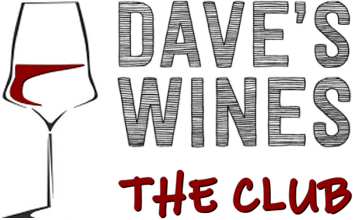




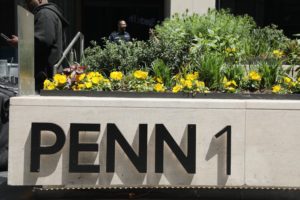
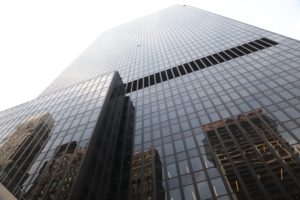
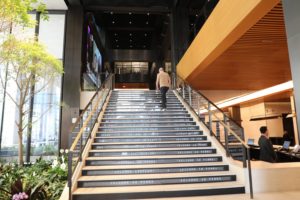
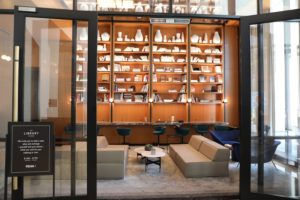
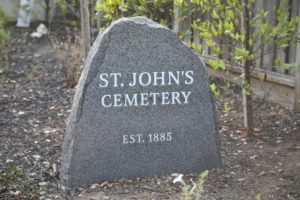
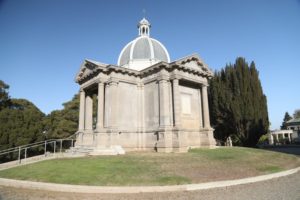
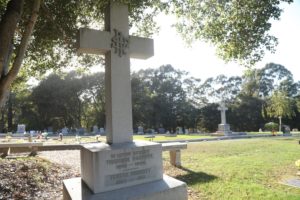
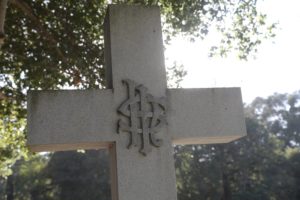
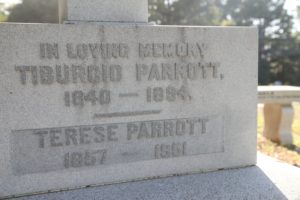
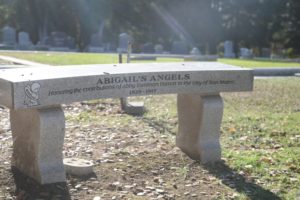
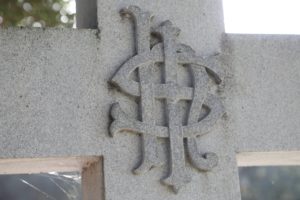
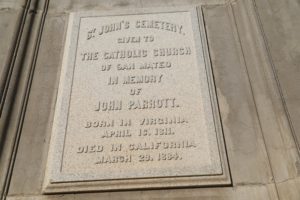
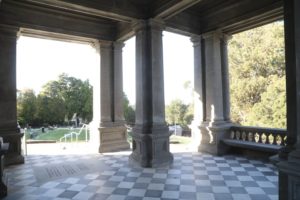
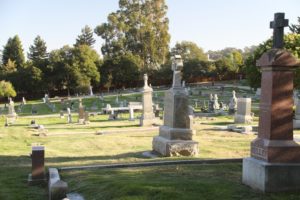
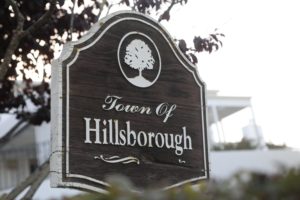
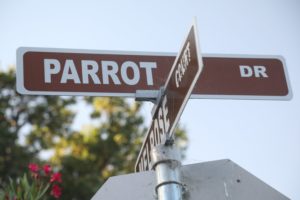

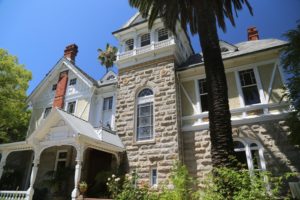

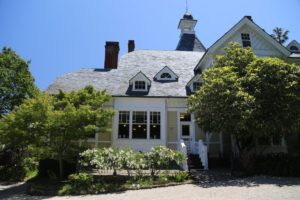
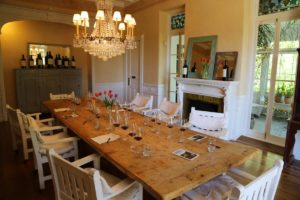
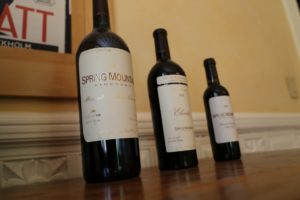
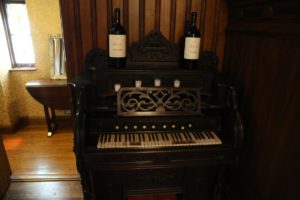
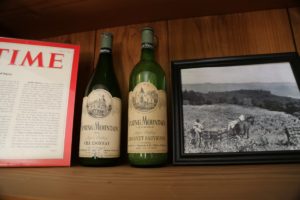
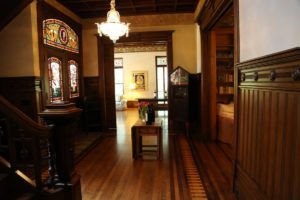
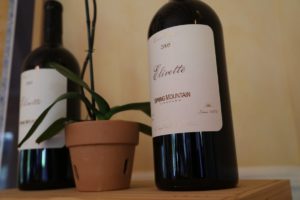
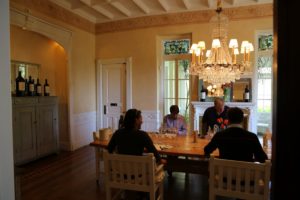
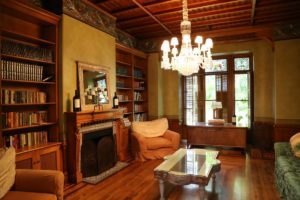
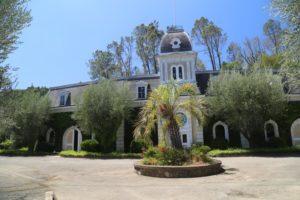
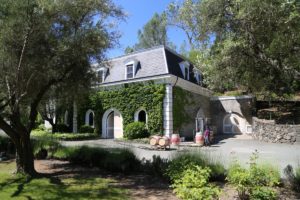
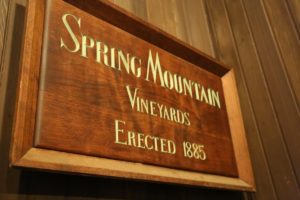
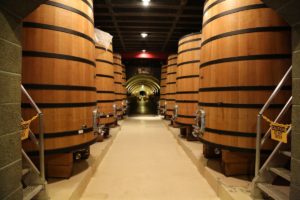
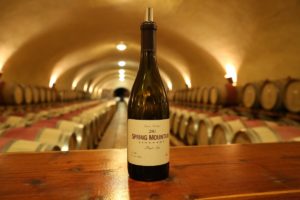
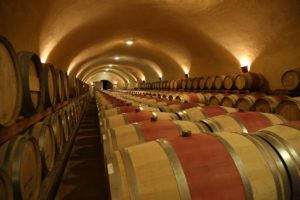
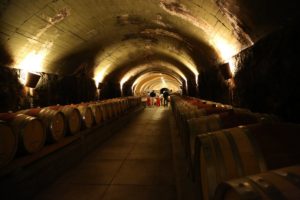
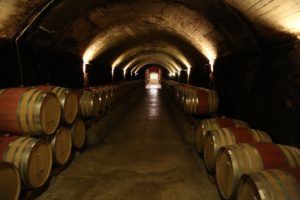
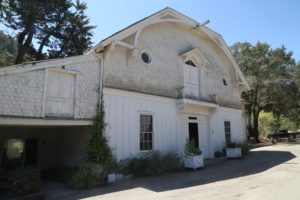
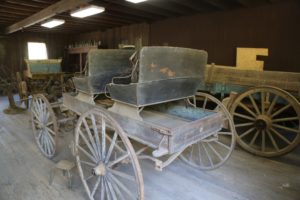
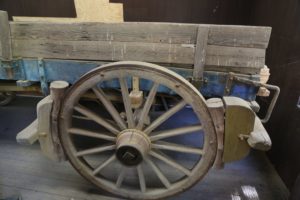
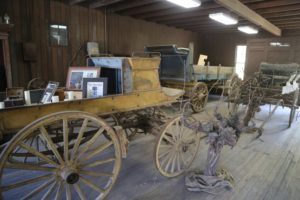
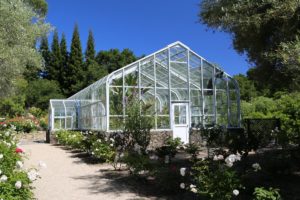
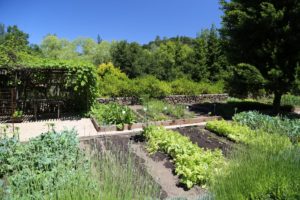
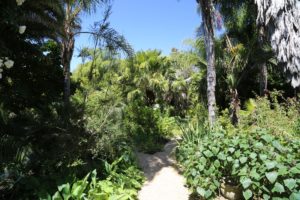
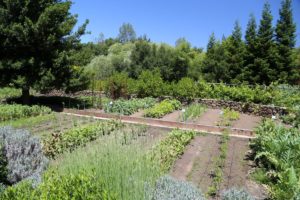
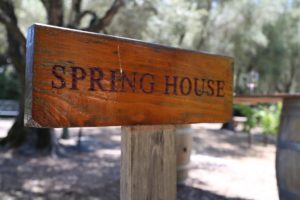
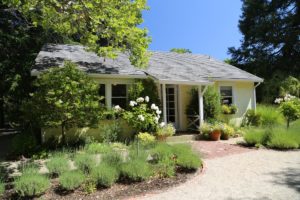
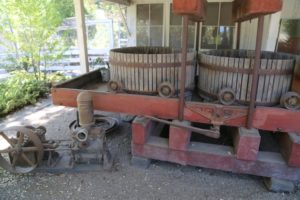
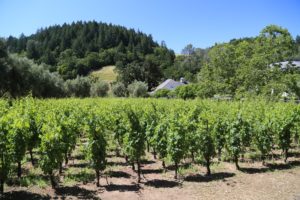

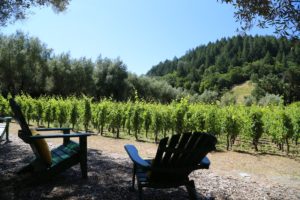
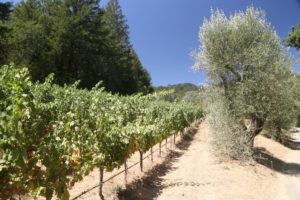
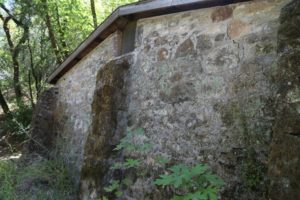
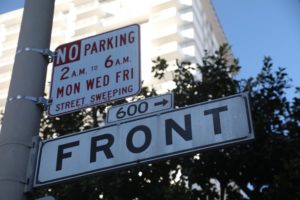
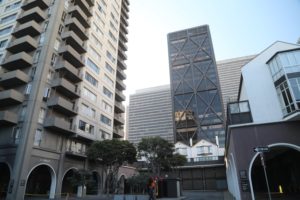
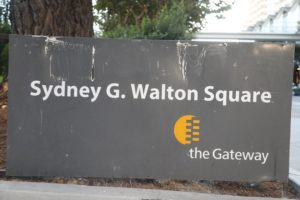
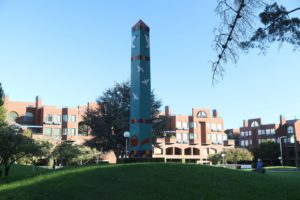
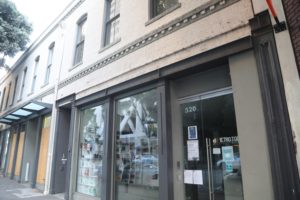
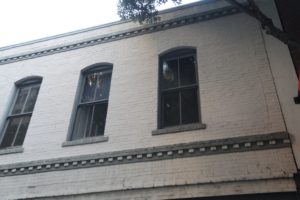
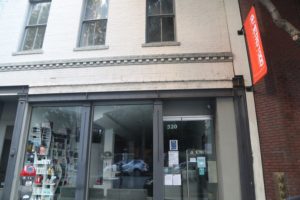
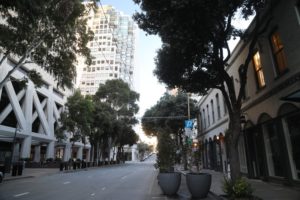
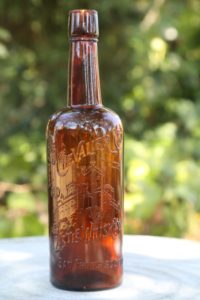
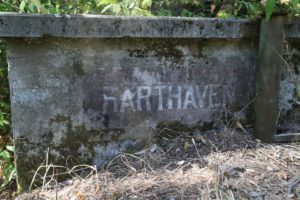
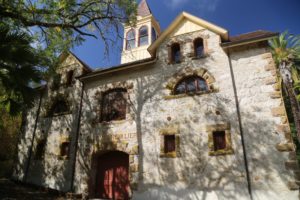
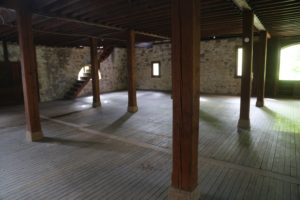
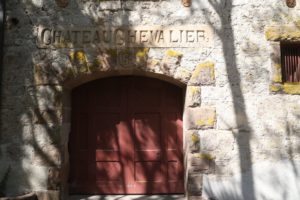
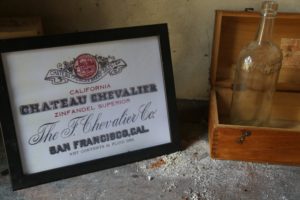
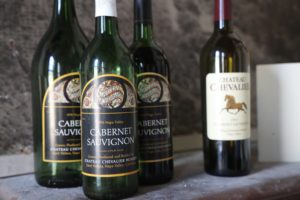
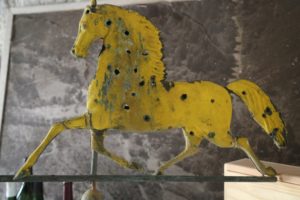
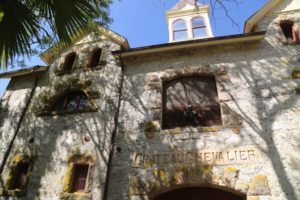
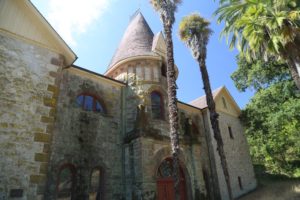
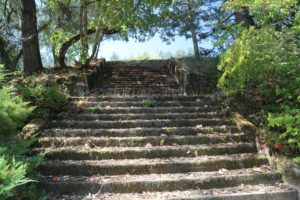
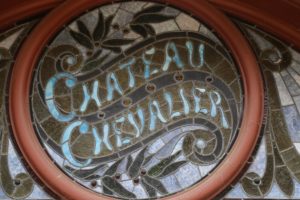
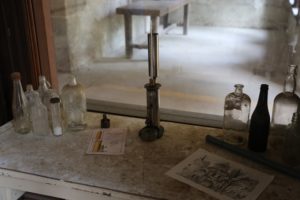
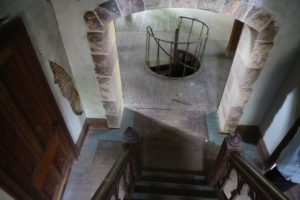
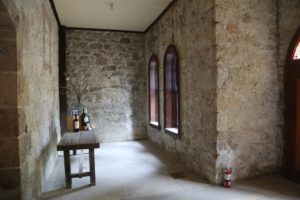
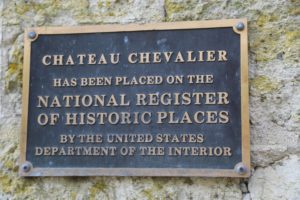
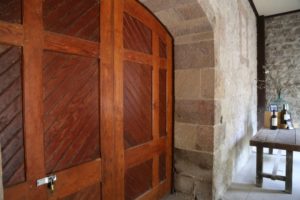
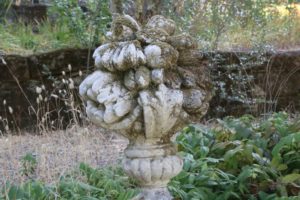
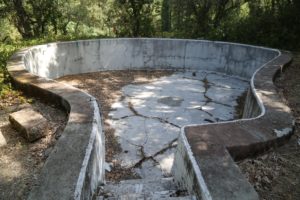
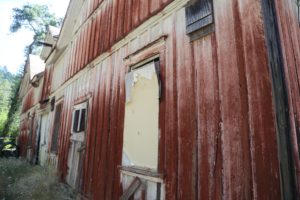
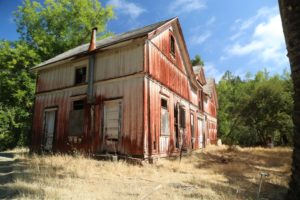
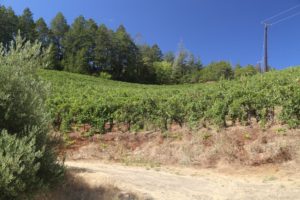
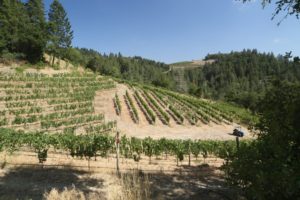
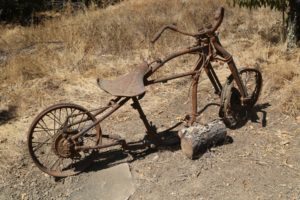
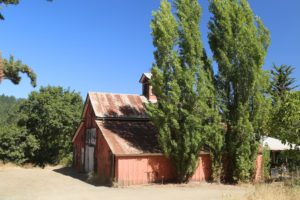
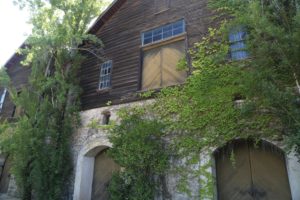
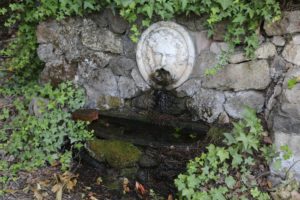
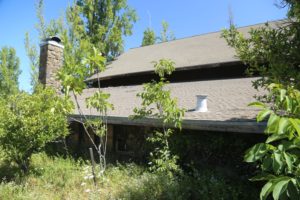
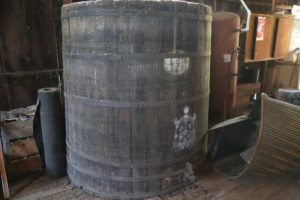
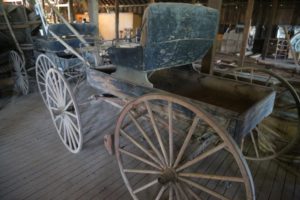
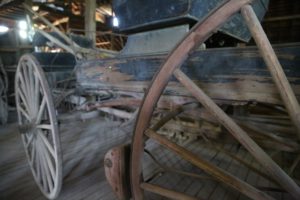
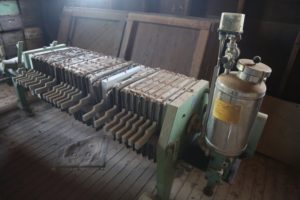
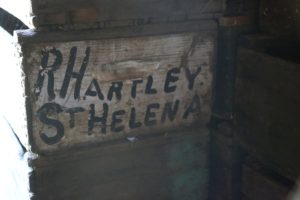
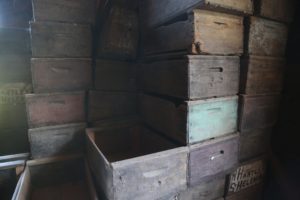
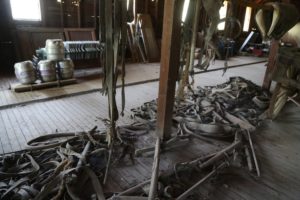
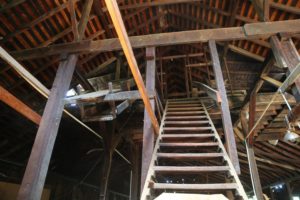
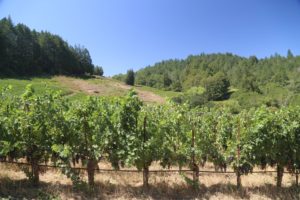
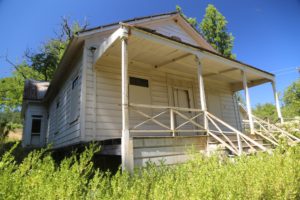
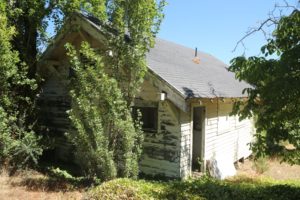
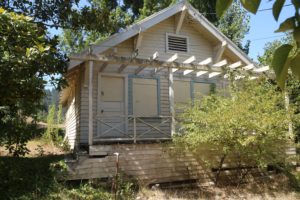
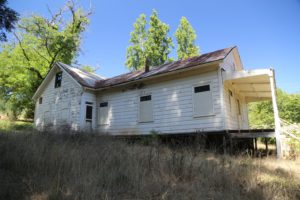
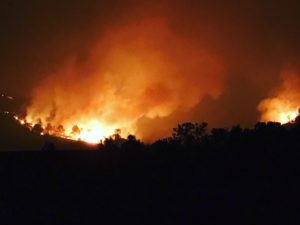
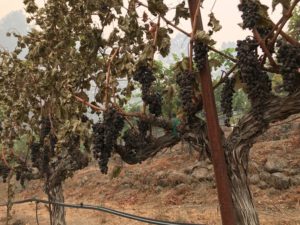
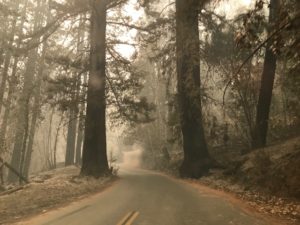
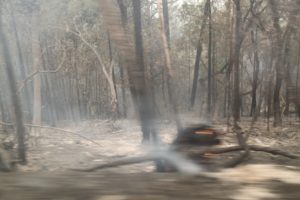
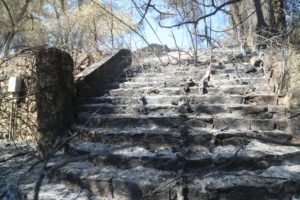
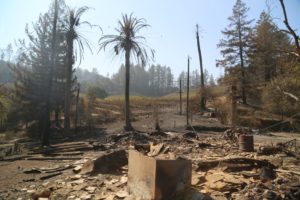
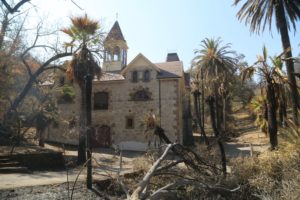
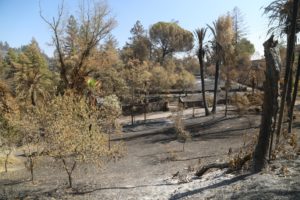
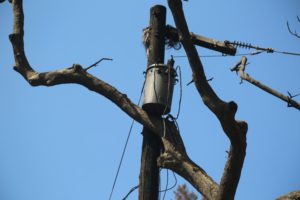
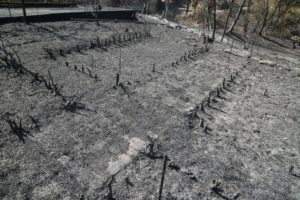
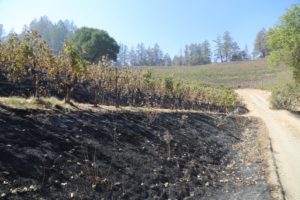
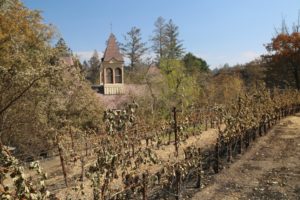
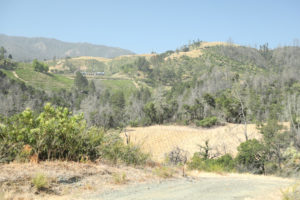
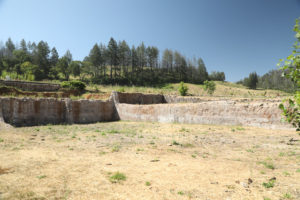
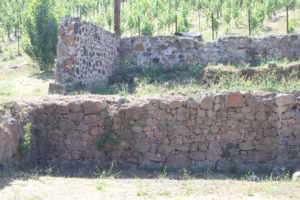
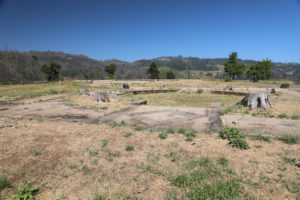
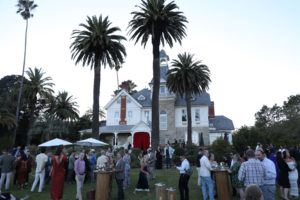
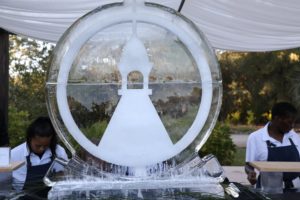
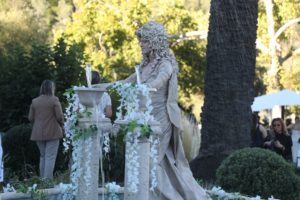

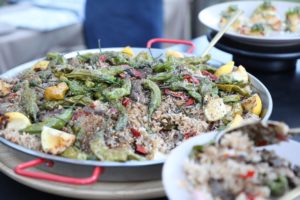
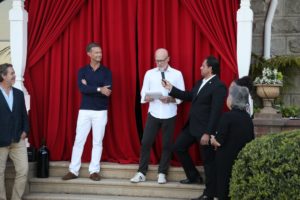
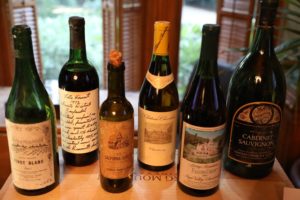
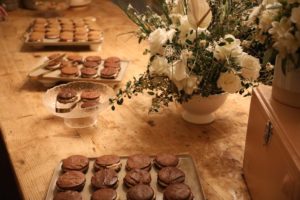
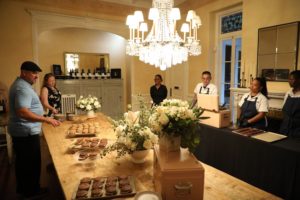
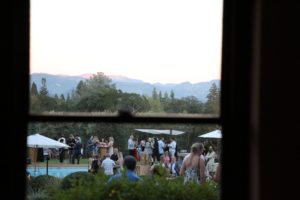
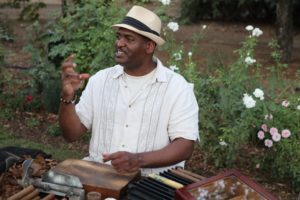
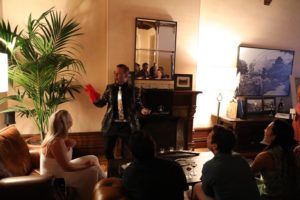

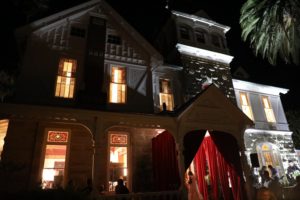
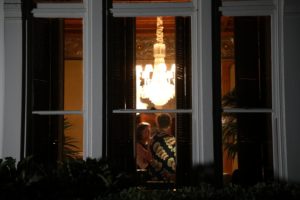
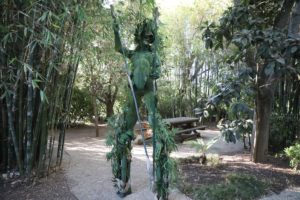
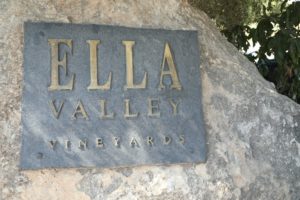
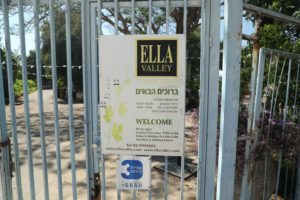
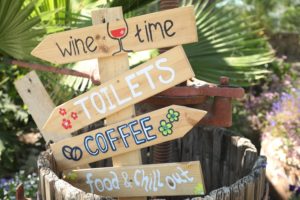

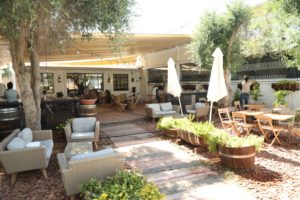
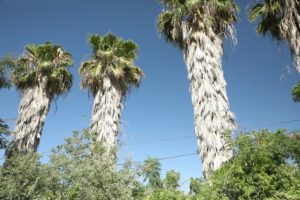
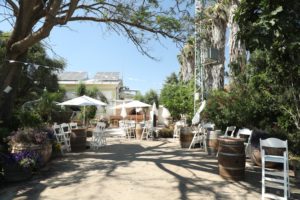
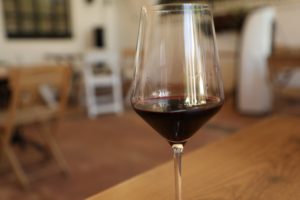
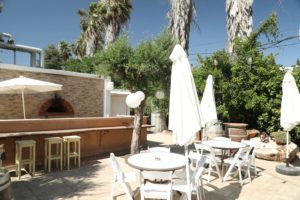

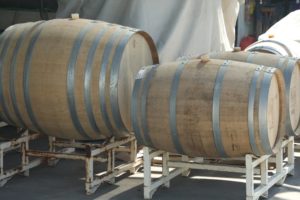
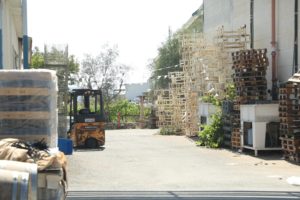
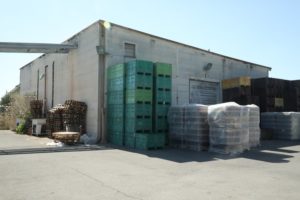
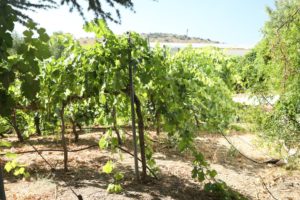
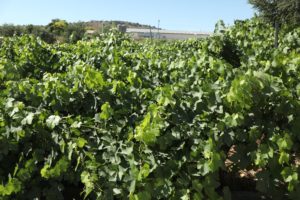
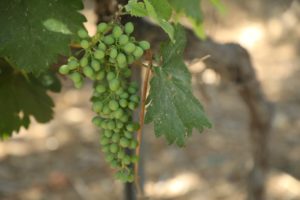
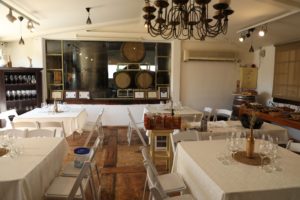
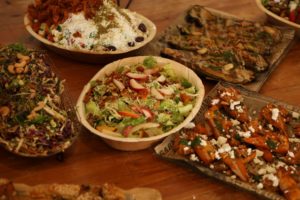
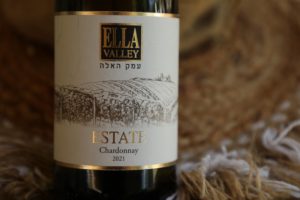
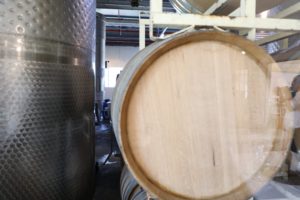
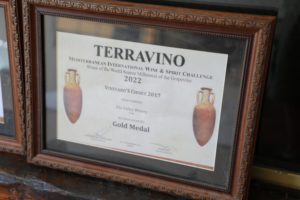
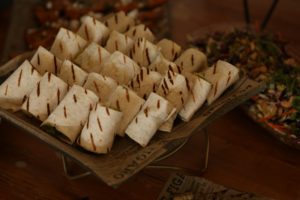
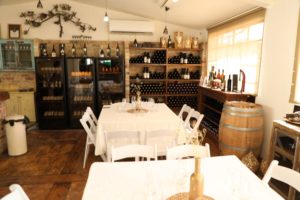
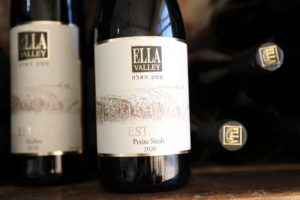
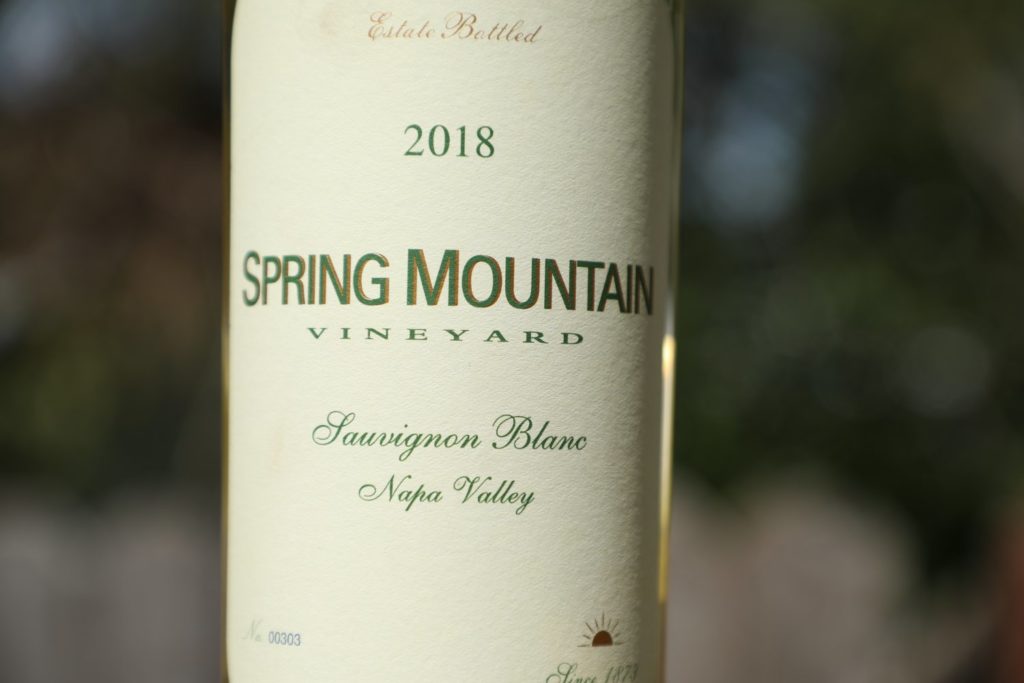
Of ALL the bad winery & vineyard news that keeps coming from these fires – this one hurts the WORST of many already. Dejected and depressed. Napa Valley has just lost a *significant* historical collection, La Perla Winery is gone, all the wooden carriages gone, historical items, records, old wine making equipment. The old WWII era army barracks. The wooden carriage house from the 1890s next to Chevalier gone. Not like we have an abundance of those in the valley anymore. And the gorgeous Draper house. And who knows what else still to be reported from the property. Ugggg 🙁 But the stories will live on. And the sadness to.
Dave, I do not know you, but I can see you know the Spring Mountain Vineyard property very well. It is so sad to lose such magical historical buildings built in the 1800s and the beautiful Draper Chateau. By the Grace of God the buildings at the original Spring Mountain were saved. One of the reasons is that Michael had put all the wires underground when restoring the home in 1976 and building the winery in 1970s. Also he had put fire plugs all around the property.
Susan Robbins
Mrs. Michael Robbins
Susan – thanks for stopping by. I have spent a lot of time on the property and have gotten to know it well over the years. Funny timing on your comment, I was just at your neighbor, Isaac’s house yesterday!
It would be neat to sit down with you at your convenience and hear some of your stories about when you and Michael owned the property.
Best regards,
Dave
Fascinating article. Due to a returned card, I was doing a current search for my cousin, Ralph Colonna (who was co-owner of Colonna-Caldaway designs in St. Helena). The search led me here due to the mention of his name as co-designing the Spring Mountain label. It is also coincidental that I was the distributor for Spring Mountain Winery in New Orleans in the 70’s and 80’s. Unfortunately, I am unable to locate a current address for Ralph who had moved to Wisconsin with his wife. Thank you, though, for a very interesting read!
Ferrell said he intends to resign soon and take a vacation before looking for a new job in March. “It’s been a great project,” he said. “I feel we’ve been really successful with our wines.”